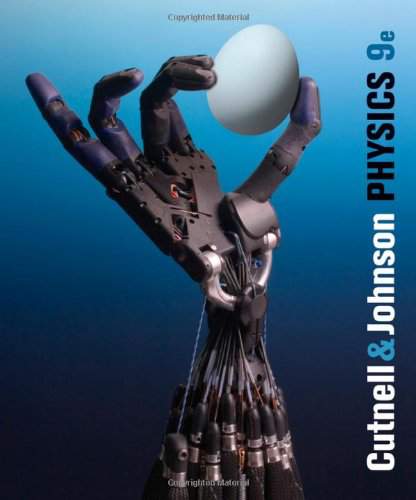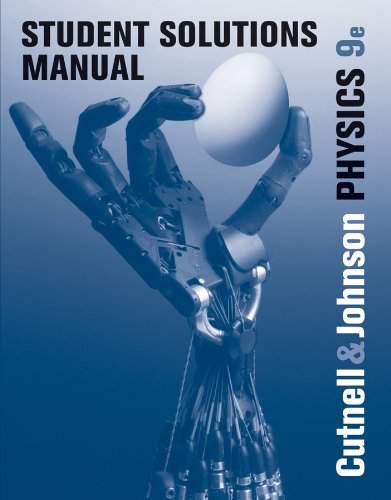
This is a quick preview of the lesson. For full access, please Log In or Sign up.
For more information, please see full course syllabus of High School Physics
For more information, please see full course syllabus of High School Physics
High School Physics Math Review
Lecture Description
Welcome to the High School Physics course on Educator.com. This course will prepare you for your endeavors in the world of physics, and will provide a good reference point for any topic that you find confusing or challenging. To start us off, we start will a review of the mathematics that you will be utilizing in this course; no level higher than basic trigonometry will be used. Physics is the science that blends together the algebra you’ve learned up to this point and science, so it’s important to not only understand the physics involved, but also the math used to arrive at an answer. Once you’re ready to begin, proceed to the next video to begin your first physics lesson.
Bookmark & Share
Embed
Share this knowledge with your friends!
Copy & Paste this embed code into your website’s HTML
Please ensure that your website editor is in text mode when you paste the code.(In Wordpress, the mode button is on the top right corner.)
×
- - Allow users to view the embedded video in full-size.
Next Lecture
Previous Lecture
















































1 answer
Last reply by: Yuyang Gu
Tue Jun 25, 2019 12:01 PM
Post by Edward Han on August 14, 2017
you video could not load
3 answers
Last reply by: Shuhui Wang
Thu Jul 4, 2024 10:01 PM
Post by Kevin Wang on March 17, 2017
Just saying, 3*(4,5) is actually (12,15), and not (12,5)
1 answer
Thu Aug 18, 2016 3:34 PM
Post by Claire yang on August 18, 2016
Do vectors continue forever?
1 answer
Sun Oct 11, 2015 6:36 PM
Post by Peter Ke on October 10, 2015
Hi Professor I was wondering what math background do you need for THIS course?
Because I'm still new to this lecture so I want to know the topic you need to know for math. Thx!
2 answers
Last reply by: francisco marrero
Wed Aug 19, 2015 9:58 AM
Post by francisco marrero on July 26, 2015
Hello Professor: I am forty nine years old and would like to learn physics, as I was always intimidated by it in high school and so gave up. Do you recommend that I study all of the other math courses, such as algebra and trigonometry on educator.com, in order to understand physics very well. Please let me know your advice. Thank you very much for your time.
2 answers
Last reply by: Anna Ha
Sun May 31, 2015 8:31 PM
Post by Anna Ha on May 31, 2015
Hi Professor Selhorst-Jones,
Thank you for your great lectures! I'm finding them very helpful :)
When rounding sig figs with the number 5 at the end, in chemistry I was taught to round to the nearest even, and in physics class I was taught to just round up. But considering science as a whole.. shouldn't the rule be all the same? Which one do you think is correct?
I just wanted to check when calculations are being continued, we have to bring the whole value down. not the rounded off value right?
Thank you!
1 answer
Thu Apr 30, 2015 10:19 AM
Post by enya zh on April 29, 2015
In "How Significant Figures Interact" you said that we must use the sig fig of the less accurate figure for our answer.In example 2, the question was 6.083*2.1, but you rounded it to 13. Since 2.1 has 2 sig figs, shouldn't the final answer be 12.8?
1 answer
Sun Oct 5, 2014 11:51 AM
Post by Zhengpei Luo on September 24, 2014
What's the essential difference between your course and the other physics course?
2 answers
Last reply by: Lexlyn Alexander
Thu Oct 23, 2014 4:36 PM
Post by adnan alsabty on July 19, 2014
Why in scalar example 3*(4,5) is equal to (12,5). Why is not (12,15) just like -2*(4,5) is equal to (-8,-10)?????
2 answers
Last reply by: Isaac Martinez
Wed Aug 31, 2016 3:49 PM
Post by justin Gwon on June 19, 2014
In the last segment of the lecture, I don't know why 5sin(36.87) is 3 ... also 5con(36.87) is 4.
1 answer
Sat Jan 4, 2014 10:25 AM
Post by Karlo Wiley on January 3, 2014
In the last segment of the lecture, I'm not sure if the angle is 36.87 because I would plug in 5 * sin (36.87) and it would give me -3.686658423 and i also plugged in 5 * cos (36.87) and I got 3.377654463... It should have 3 and 4... so I did remember in the lecture there is a segment that you can find the angle if you know your sides... sin^-1 * b/c would give you the angle... so if c = 5 and b (y in the slide) = 3 then sin^-1 * 3/5 = 0.6435011088... So with this new angle i plugged in the numbers again in 5 * sin (0.6435011088) and it gave me 3 and I also plugged in 5 * cos (0.6435011088) and that gave me 4 which was your answer and checks out with pythagoreans theory... Sooo my question is am I right? honestly I still haven't taken trigonometry or physics, I'm in tenth grade taking geometry and biology.. I'm just interested in this subject so I don't know much at all about trigonometry or physics in general...
3 answers
Mon Aug 26, 2013 11:23 PM
Post by Jeremy Canaday on August 16, 2013
i didn't know that tensor calculus x vector analysis/differential equations were prerequisites to high school physics.
2 answers
Last reply by: James Pelezo
Sun Mar 24, 2013 3:12 PM
Post by Al Khurasani on October 8, 2012
Shouldn't the SI unit of Volume be "Cubic Metre" ?
"In the International System of Units (SI), the standard unit of volume is the cubic metre (m3)"
[WikiPedia]
4 answers
Last reply by: Robert Mills
Thu Oct 3, 2013 12:58 PM
Post by Nigel Hessing on June 2, 2012
I don't understand why is 3 x (4, 5) = 12,5 shouldn't it be 12, 15?